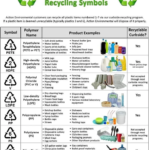ICMR study reveals Superbugs (antimicrobial resistance) in leading hospitals of India

The Indian Council of Medical Research (ICMR) releases the annual Antimicrobial Resistance Research and Surveillance Network report. The report highlights the following points on Superbugs.( antimicrobial resistance)
- Presence of superbugs in 21 leading hospitals in India.
- Hospitals such as AIIMS Delhi.PGI Chandigarh and Gangaram Hospital are mentioned in the report.
LEARNING FROM HOME/ WITHOUT CLASSES / BASICS
Since their discovery, antibiotics have served as the cornerstone of modern medicine. However, the persistent overuse and misuse of antibiotics in human and animal health have encouraged the emergence and spread of antibiotic resistance, which occurs when microbes, such as bacteria,
become resistant to the drugs used to treat them.
Antibiotic resistance
happens when germs like bacteria and fungi develop the ability to defeat the drugs designed to kill them. That means the germs are not killed and continue to grow.
Antibiotic resistance does not mean the body is becoming resistant to antibiotics; it is that bacteria have become resistant to the antibiotics designed to kill them.
As a result, standard medical treatments become ineffective and infections persist and may spread to others. Microorganisms that develop antimicrobial resistance are : sometimes referred to as “superbugs”.
This makes infections virtually untreatable, taking us back to the pre-antibiotic era.
While AMR to some extent is a natural phenomenon, certain human actions accelerate this process of increasing resistance. The single most powerful contributor to resistance : the global unrestrained use of antibiotics. This includes their underuse, overuse and misuse in both human and animal health (food animals and companion animals)
and in agriculture.
effective way of preventing antibiotic resistance: use antibiotics only when doctors prescribe them. The first antibiotic was penicillin, discovered by Alexander Fleming.
According to a 2016 PLOS Medicine paper, 416 of every 100,000 Indians die of infectious diseases each year. This is more than twice the U.S.’s crude infectious-disease mortality-rate in the 1940s, when antibiotics were first used there. If antibiotic stop working India will see a medical emergency.
Three major sources of resistance: overuse of antibiotics by human beings; overuse in the veterinary sector; and environmental antibiotic contamination due to pharmaceutical and hospital discharge.
To tackle the first source, India classified important antibiotics under Schedule H1 of the Drugs and Cosmetics Rules 1945. So that they couldn’t be sold without prescriptions. Still, Schedule H1 drugs are freely available in pharmacies, with state drug-controllers unable to enforce the law widely.
As far as veterinary use goes, India’s 2017 National Action Plan on Antimicrobial Resistance did talk about restricting antibiotic use as growth promoters. Companies still sell last-resort drugs to farmers over the counter.
The 2017 document also spoke about regulating antibiotics levels in discharge from pharmaceutical firms has been pumping massive amounts of antibiotics into local lakes, rivers and sewers. This has led to an explosion in resistance genes in these waterbodies.
India is yet to introduce standards for antibiotics in wastewater. Antibiotic discharge in sewage is not even being monitored regularly. As the country takes its time to formulate regulations, the toll from antibiotic-misuse is growing at an alarming rate. According to a 2013 estimate, around 58,000 newborns die in India each year due to sepsis from resistant bacteria.






0 Comments